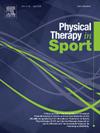Rehabilitation and assessment practices following anterior cruciate ligament injury: A survey of Australian physiotherapists
IF 2.2
3区 医学
Q1 REHABILITATION
引用次数: 0
Abstract
Objective
This study aimed to investigate the current beliefs and practices among Australian physiotherapists regarding the management of anterior cruciate ligament (ACL) injuries.
Design
Cross-sectional survey.
Setting
Online survey.
Participants
Australian physiotherapists.
Outcome measures
The survey assessed beliefs and practices regarding non-operative management, ACL reconstruction, pre- and post-operative rehabilitation, and return to sport (RTS) criteria. Frequencies and percentages summarized survey responses, and chi-square or Fisher's exact tests assessed whether beliefs and practices were influenced by experience (≤6 years or >6 years) and annual caseload (<6 or ≥6 patients).
Results
In total, 419 physiotherapists were included, with 367 completing the survey in its entirety. Most physiotherapists (86.8%) consider non-surgical management alternatives for patients. Two-thirds (59.8%) recommend a minimum of 9–12 months before RTS, emphasizing recovery of knee strength (93.9%) and psychological readiness (93.9%). Of those who assessed strength, 32.5% use manual muscle testing, and 37.4% assess strength from hop testing. The 63.5% of respondents who reported barriers to implementing best practice ACL management, cited lack of resources (69.1%) and patient non-compliance (67.8%) as the most common reasons.
Conclusion
This survey of Australian physiotherapists showed alignment with evidence-based ACL guidelines but highlighted differences from international practices and variations by experience and caseload.
前交叉韧带损伤后的康复和评估实践:澳大利亚物理治疗师的调查。
目的:本研究旨在探讨当前澳大利亚物理治疗师对前交叉韧带(ACL)损伤管理的信念和做法。设计:横断面调查。设置:在线调查。参与者:澳大利亚物理治疗师。结果测量:该调查评估了非手术治疗、ACL重建、术前和术后康复以及重返运动(RTS)标准的信念和做法。频率和百分比总结了调查结果,卡方检验或Fisher精确检验评估了信念和实践是否受到经验(≤6年或≤6年)和年度病例量的影响。结果:总共包括419名物理治疗师,其中367名完成了完整的调查。大多数物理治疗师(86.8%)考虑对患者进行非手术治疗。三分之二(59.8%)建议至少在RTS前9-12个月,强调膝关节力量恢复(93.9%)和心理准备(93.9%)。在评估力量的人中,32.5%使用手动肌肉测试,37.4%通过跳跃测试评估力量。63.5%的受访者报告了实施最佳ACL管理的障碍,其中最常见的原因是缺乏资源(69.1%)和患者不遵守(67.8%)。结论:这项对澳大利亚物理治疗师的调查显示与基于证据的ACL指南一致,但突出了与国际实践的差异以及经验和病例量的差异。
本文章由计算机程序翻译,如有差异,请以英文原文为准。
求助全文
约1分钟内获得全文
求助全文
来源期刊

Physical Therapy in Sport
医学-康复医学
CiteScore
4.50
自引率
8.30%
发文量
125
审稿时长
39 days
期刊介绍:
Physical Therapy in Sport is an international peer-reviewed journal that provides a forum for the publication of research and clinical practice material relevant to the healthcare professions involved in sports and exercise medicine, and rehabilitation. The journal publishes material that is indispensable for day-to-day practice and continuing professional development. Physical Therapy in Sport covers topics dealing with the diagnosis, treatment, and prevention of injuries, as well as more general areas of sports and exercise medicine and related sports science.
The journal publishes original research, case studies, reviews, masterclasses, papers on clinical approaches, and book reviews, as well as occasional reports from conferences. Papers are double-blind peer-reviewed by our international advisory board and other international experts, and submissions from a broad range of disciplines are actively encouraged.
 求助内容:
求助内容: 应助结果提醒方式:
应助结果提醒方式:


